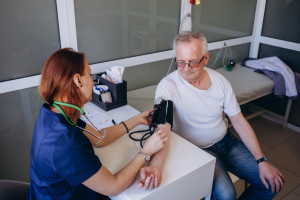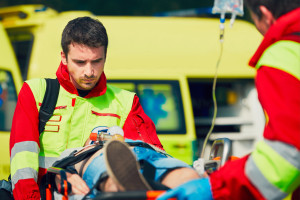From Punishment for "Cowardice" to Immediate Assistance. "Safe Podlasie" and New Models for the Army

- Psychological support is important for soldiers, but so is rapid diagnosis and preventive measures - from vaccinations to responses to epidemiological threats.
- Modern soldier care includes, among others, TCCC and CLS training
- In wartime conditions, mobile MERT teams and interventions in line with the PIE principle are also important - immediate, with the assumption of a quick return to service.
- WIM-PIB initiated the operation of 24-hour medical teams and also introduced flexible resource management and simulation systems in activities such as "Safe Podlasie"
As demonstrated in a report by the Military Medical Institute, Health Market, and CIS Economic Trends, contemporary conflicts and humanitarian crises, such as the war in Ukraine, clearly demonstrate that effective soldier health care must be comprehensive and multifaceted, encompassing not only rapid treatment of physical injuries and illnesses but also essential psychological support. Soldiers on the front lines of operational operations are particularly vulnerable to prolonged combat stress, witnessing the death and suffering of their colleagues, and a constant sense of threat, all of which pose a significant psychological burden.
The history of military mental health treatment has evolved significantly, from the stigmatization and punishment of "cowardice" during World War I to the implementation of rapid psychiatric intervention programs on the front lines during World War II. These programs were based on the "PIE" (Proximity, Immediacy, Expectancy) principle , which meant immediate intervention with the goal of rapid return to duty. These efforts significantly reduced the risk of permanent mental health problems and increased the mental resilience of the troops.
Psychological support is an important element of care for soldiersToday, modern armies, such as the US and UK, consider psychological support an integral element of their soldier care systems. Support programs should include comprehensive training for military psychologists, individual and team-based interventions, and extensive education in recognizing the symptoms of post-traumatic stress and burnout. Examples include the widespread US TCCC (Tactical Combat Casualty Care) and CLS (Combat Lifesaver) training.
- TCCC is an advanced tactical rescue course designed for soldiers and medics operating on the battlefield. The course teaches how to treat critically injured individuals in three phases: under fire, in a zone of relative safety, and during evacuation.
It focuses on activities such as: stopping bleeding (e.g. with tourniquets), opening the airway, treating pneumothorax, securing wounds, hypothermia and medical evacuation.
TCCC is mandatory for, among others, special forces soldiers, field medics and rescue instructors.
CLS - Combat Lifesaver is a basic tactical medicine course for soldiers who are not medics but may be first responders on the battlefield. It teaches critical lifesaving interventions, such as applying a tourniquet, applying a hemostatic dressing, performing needle decompression, and evacuating a wounded person from the field of fire.
Training typically lasts several days and concludes with a practical exam. The goal is to ensure that at least one person in each military team is capable of effective rescue operations before a medic arrives.
Both training courses increase the survival of the wounded on the battlefield and are the foundation of modern military medicine in the United States.
In Great Britain , mobile rescue teams MERT (Mobile Exploitation and Reconnaissance Team) have been developed, which provide advanced medical care and psychological support during evacuation.
The Military Institute of Medicine - National Research Institute plays a crucial role in this process. It implements innovative solutions in diagnostics, therapy, and prevention, both in routine and operational settings. The Institute emphasizes flexible resource management, IT system integration, and staff competency development through regular training and simulation exercises.
The model of 24-hour on-call specialist medical teams, implemented in the "Safe Podlasie" operation, enabled the identification of soldiers' actual needs, immediate response to injuries and illnesses, and effective management of resources in a dynamic operational environment.
Integration of civilian and military resources is the key to the soldier security systemThe conclusions from the experience of WIM-PIB and international analyses are clear: the effectiveness of the medical support system for soldiers requires the integration of civilian and military resources, flexible human resources management, the implementation of modern technologies and regular training and exercises.
Preventive measures tailored to location and time are also crucial: from vaccinations and health education, through psychological support, to advanced hygiene protocols and rapid response to epidemiological threats. Cross-sectoral cooperation, standardization of procedures, and the development of medical infrastructure and technologies are the foundations of system resilience, enabling optimal use of resources and ensuring the highest level of health safety for soldiers.
Copyrighted material - reprint rules are specified in the regulations .
rynekzdrowia











